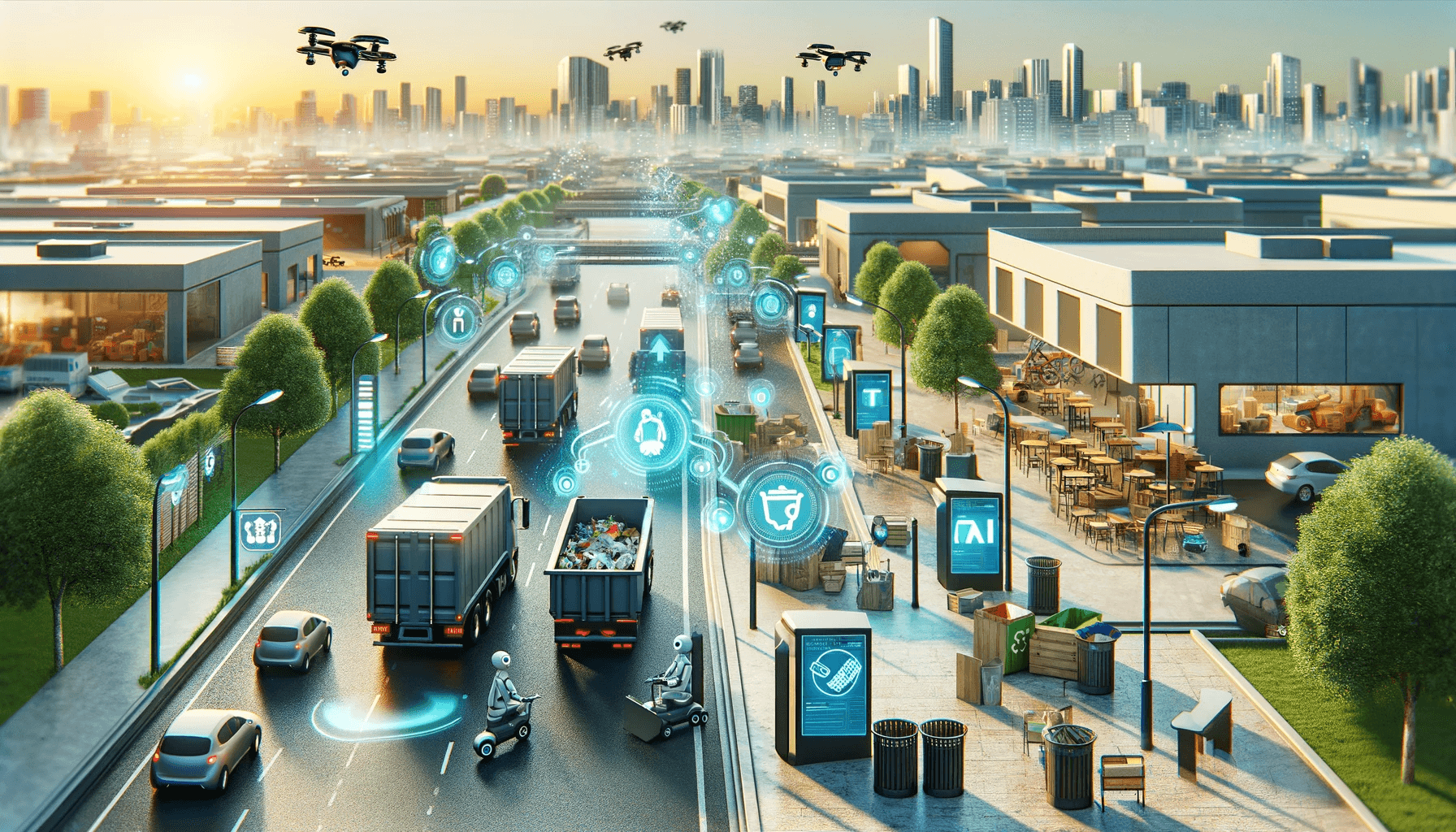“Innovation is the calling card of the future.” – Anna Eshoo
Introduction: Pioneering a Revolution in Waste Management with AI
Welcome to a world where the age-old challenge of waste management meets the cutting-edge solutions of the 21st century. The future of our planet rests in the balance, and AI in waste sorting is tipping the scales towards sustainability. This blog is your window into a world where AI is crafting a cleaner, greener future, one sorted piece of waste at a time.
We’re not just talking about theoretical concepts or distant possibilities; we’re diving into tangible, impactful examples where AI has already begun crafting a more sustainable and efficient future. Join us as we uncover how AI is transforming waste management from a necessary chore to an intelligent, eco-friendly science, marking a new era in our relationship with the environment.
The Vanguard of Change: AI in Action
- Case Study 1: Singapore’s AI-Powered Waste Management
Singapore’s approach to waste management integrates AI to uphold its reputation for efficiency and cleanliness. The city-state has adopted AI-driven systems that employ a combination of advanced sensors and machine learning algorithms.
These systems are adept at recognising and sorting various types of waste, channelling them into the correct recycling streams. The implementation of AI has led to significant operational improvements: a noticeable reduction in landfill usage and an increase in recycling rates. This approach not only benefits the environment but also serves as a model for urban sustainability.
- Case Study 2: Barcelona’s Smart Bins
Barcelona’s waste management initiative features ‘smart bins’ equipped with AI technology. These bins are not just receptacles for waste but integral parts of a smarter waste collection system. They use weight sensors and volume tracking to collect data on waste generation patterns.
This data is used to optimise collection routes and schedules, leading to reduced emissions from waste collection vehicles and a more efficient waste management process. The project is an excellent example of how technology can improve urban living while encouraging residents to participate actively in waste management.
- Case Study 3: San Francisco’s AI-enhanced Recycling Programme
San Francisco’s recycling programme has been enhanced with AI technologies at its facilities. These AI systems use sophisticated image recognition technology to sort recyclables more effectively. This technology ensures a higher purity of sorted materials, reducing contamination and improving the overall efficiency of the recycling process.
As a result, the amount of waste directed to landfills has decreased significantly, aligning with the city’s ambitious environmental goals. The use of AI in this context not only streamlines waste management but also contributes to a sustainable urban environment.
- Case Study 4: Seoul’s Intelligent Waste Management System
Seoul has introduced an intelligent waste management system incorporating AI to address its urban waste challenges. This system employs predictive analytics and data modelling to anticipate waste generation trends and optimise collection routes. This innovation leads to operational efficiencies, reducing waste management costs and environmental impact.
In addition, Seoul’s waste management authority uses AI-driven tools to educate and engage residents in waste reduction and recycling practices. This dual approach—optimising waste collection and promoting public participation—highlights Seoul’s commitment to sustainable urban development and environmental stewardship.
The Ripple Effect: Environmental and Economic Impacts
- Reducing Carbon Footprint
AI in waste sorting significantly cuts down the carbon emissions associated with waste management. Automated sorting and optimised collection routes mean fewer trips to landfills and recycling centres, translating into lower fuel consumption and reduced greenhouse gas emissions.
- Economic Revitalization Through Recycling
AI-driven waste sorting breathes new life into the recycling industry. By ensuring high purity in sorted materials, these systems enhance the quality of recyclables, making them more valuable in the market. This revitalisation not only supports the recycling industry but also promotes economic growth by creating new job opportunities in the technology and waste management sectors.
Overcoming Challenges: The Path Forward
- Integrating AI with Existing Infrastructure
One of the primary challenges in adopting AI in waste sorting is integrating it with existing waste management infrastructures. This integration requires substantial investment and strategic planning but promises long-term benefits in efficiency and environmental impact.
- Continuous Learning and Adaptation
The evolving nature of waste due to changing consumer habits necessitates that AI systems continuously learn and adapt. This ongoing refinement ensures that AI can handle new types of waste and remain effective in sorting and management.
Conclusion: AI—A Key Player in Our Sustainable Future
As we stand at the crossroads of technological advancement and environmental responsibility, AI in waste sorting emerges as a beacon of hope. It represents a future where technology and ecology walk hand in hand, where our actions align with our responsibilities to the planet.
“The only way forward, if we are going to improve the quality of the environment, is to get everybody involved.”
~Richard Rogers
This journey with AI is not just about refining waste management; it’s about reimagining our relationship with the environment. It’s a commitment to future generations—a pledge to leave behind a world that’s cleaner, greener, and sustainable.







No comment yet, add your voice below!